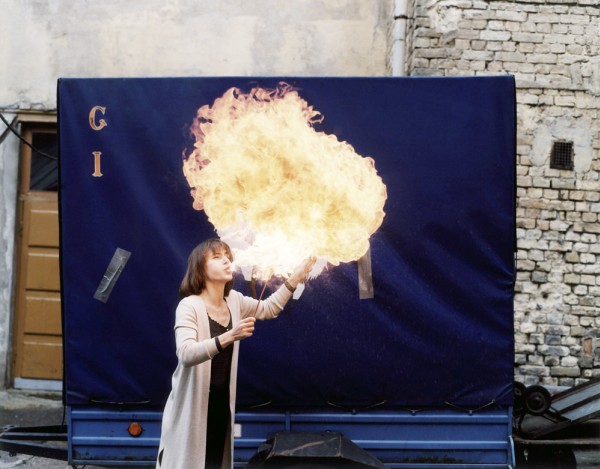
Built in 1888 and unchanged since, Riga Circus is the world's oldest hard top circus still standing in its original form. Latvia's first film projections were held here in 1889 and the Circus has never stopped its shows throughout the country's tumultuous history. During a show two thirds of the 130 people working here are Russian. Occupied by the Soviets from 1940 until independence in 1990, the Russians represent a third of Latvia's population (800 000 of 2 600 000). The Soviet period was the circus hey day. There were over 40 hard top circuses spread around the Soviet Union. Encouraged, taught in schools and subsidised during Soviet rule, the physical prowess's of circus performers were emblematic of a socialist brave new world.
Independent and soon to be member of the European Community, Latvia no longer subsidises the Circus. By the end of 2003, the Circus will be returned to the heirs of its previous owners before it was nationalised by the Soviets. Situated in the town centre, the Circus is prime real estate and most believe that it will be pulled down to be replaced by office blocks. Of all those that I met, few were optimistic about the Circus's future. The young plan to leave and work in other European countries. The elderly don't know what they will do.
© Rip Hopkins 2003
*The text above is the official presentation. The European Community and the French multinational Lagardère commissioned me to do this body of work. They heavily censored my initial version as it did not convey what they wanted to communicate about Latvia, a country just about to enter the European Community.
Latvia is a European Community paradox. Half of the country’s population is not Latvian but Russian, Belorussian and Ukrainian, populations who are not European Community members.
I chose to work around Riga’s circus as under soviet times the circus was an important element for communicating communist ideology where mind and body interact in a show of physical prowess. As a result the majority of the people working in Riga’s circus are Russian.
A third of Latvia’s two and a half million population is Russian, most of whom speak only Russian and hold soviet period identity cards. These people do not have Latvian nationality even though they have lived in this country all their lives and often for many generations. When Latvia entered the European community the Russians suddenly found themselves in a foreign country. They could no longer travel to neighboring Lithuania, Estonia or Poland as they need European passports and if they go to Russia they cannot return to Latvia for the same reason.
Essentially the Russians, Belorussians and Ukrainians (half of Latvia’s population) are prisoners in their own country. Today they have two possibilities. Either they obtain Latvian nationality which is extremely difficult due to European regulations or they leave definitively for their ancestors’ countries, which most of them have never known.
New Latvian language requirements for certain employment sectors and the sudden reality of the monolingual Russian speakers living in a new “foreign” country has hence spurred a large emigration movement. The young Russians working in Riga’s circus dream of going to France or Germany where subventions are easily available whilst older generations are very worried about the future.
© Rip Hopkins 2008

Oksana Reine, 36, russian. She's a fire eater and has been working at the circus for one year.